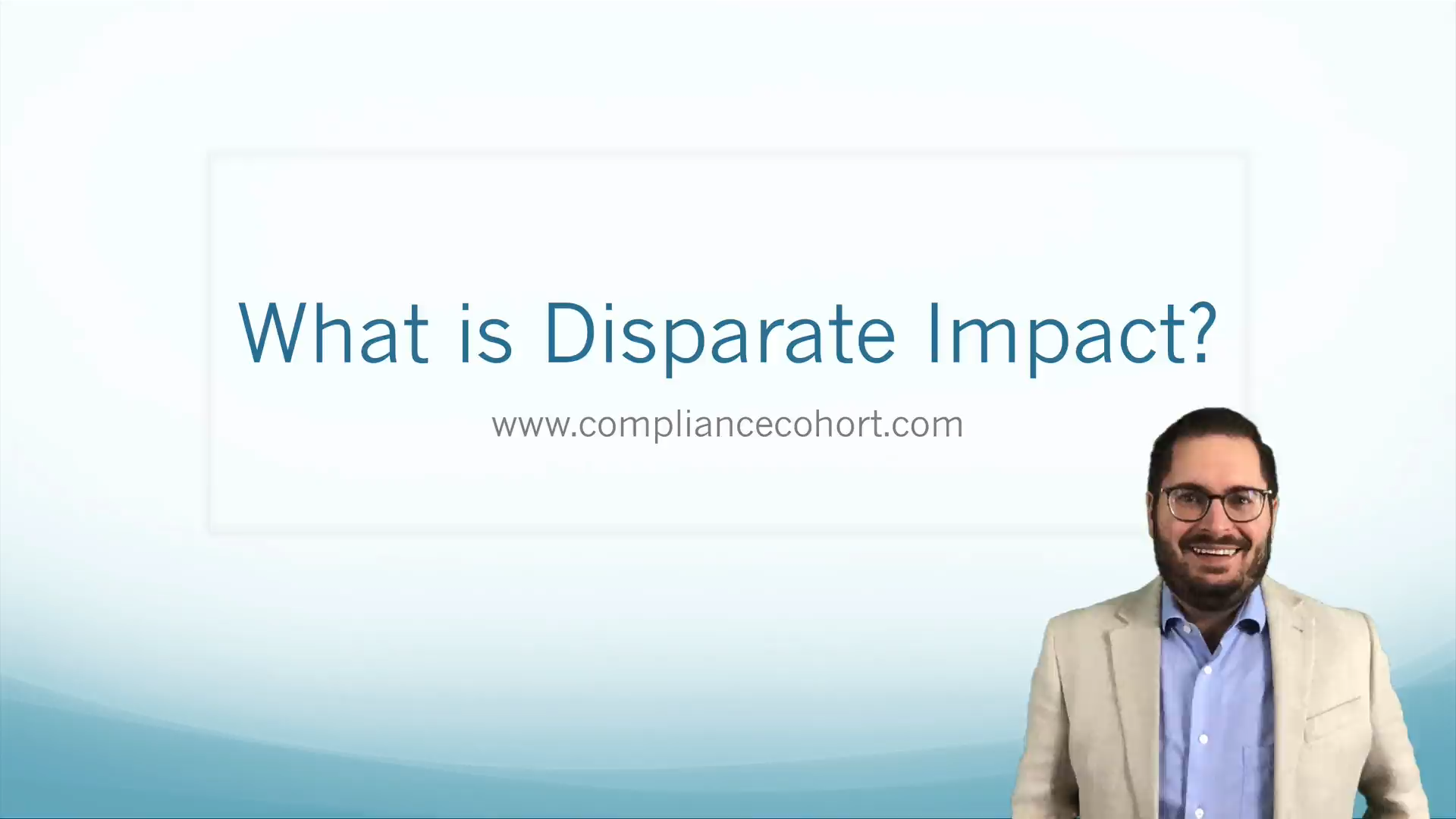VIDEO: What is Disparate Impact
In this Compliance Clip (video), Adam discusses how disparate impact can be discrimination and provides a few examples. This video can be shared with your lending team for training purposes, just copy and paste the webpage above in an email link.
Video Transcript
The following is a transcript of this video.
This Compliance Clip is going to talk about disparate impact. Disparate impact is one of three types of discrimination as defined by the court system. This is actually a three part-series that we're doing as a Compliance Clip, which is a free video we're offering to you, here at compliancecohort.com. This is one of those three videos.
The three types of discrimination are each of our videos. The first type of discrimination is overt evidence of disparate treatment, the second type is comparative evidence of the disparate treatment, and the third type is evidence of disparate impact. That will be our topic today. This is actually a topic we just talked about in our Fair Lending Bootcamp that we have released in our store. Fair Lending Bootcamp is an on-demand program that takes a very deep dive into fair lending. In fact, it’s a full-day virtual seminar so if you’ve not seen that, you can take a look at that in our store, compliancecohort.com/store.
As far as disparate impact, this is interesting because I saw an example of disparate impact just this week in a question that came by that I'll share with you in just a minute. Disparate impact is something that occurs when a lender applies a racially or otherwise neutral policy or practice equally to all applicants, which doesn't sound like a problem, but the result is that the policy or practice disproportionately excludes or burdens certain applicants on a prohibited basis. It’s an unintentional consequence to a policy that appears in and of itself to be neutral but has the ultimate effect of discriminating based on a protected class.
I'll give you two examples.
First example is the question I saw this week. The question said, is this an underwriting problem? What they were doing was they were requiring proof of income for retired applicants in every situation. But for employed applicants, if their credit score was over 720, those applicants did not have to prove their income. So what they had was, again, employed applicants, if your credit score is under 720, you had to prove income. But if your credit score is over 720, you did not have to prove your income. For retired applicants, in every case, they had to prove income regardless of their credit score. The way that could be disparate impact is you have retired individuals who would potentially be elderly customers as defined by regulation B, that is what age? That's age 62. So if you have elderly individuals who are required to prove income, compare that to somebody who is not retired and he was employed and they do not have to prove income, you're making that elderly individual jump through more hoops than you would similarly situated younger individual. So you can see how that could be potential disparate impact, and that’s a potential type of discrimination.
Another example of this would be, potentially, a loan amount. This is another example of potential disparate impact. It is if you have a rule that says we're only going to lend to applicants who have a loan amount of $450,000 or more. I completely understand why some banks might do that because it's much more profitable to do one $450,000 mortgage than it is to do ten $45,000 mortgages. But what ultimately happens is if you require a mortgage to be at least $450,000, you're potentially discriminating against certain protected classes. What protected classes would those be? Those would may be women applicants, or younger applicants, or retired applicants, or minorities or anybody who does not make that type of income in order to qualify for a larger mortgage.
Those are examples of disparate impact and in our Fair Lending Bootcamp, we actually gave another third example, but this often occurs in minimum loan amounts like I explained. You could have a minimum loan amount, you can have a business necessity. You can say, look, we're not going to do mortgage loans for a thousand dollars because they're not profitable. You're allowed to do that as long as you prove it as a business necessity. So what you really want to do in the organization is to figure out what that line is, as far as your profitability, and just define it, document it so you have it available if you ever were to receive a complaint. But I will tell you, there was a bank that was requiring a minimum loan amount of $450,000. They got hammered by the regulators and they had to decrease that down to a minimum loan amount of around $30,000, which they were able to justify as a business necessity saying that amount lower than that would not be profitable for them. As long as you justify it, that could be okay for you.
That is disparate impact. It’s one of the three types of discrimination.

